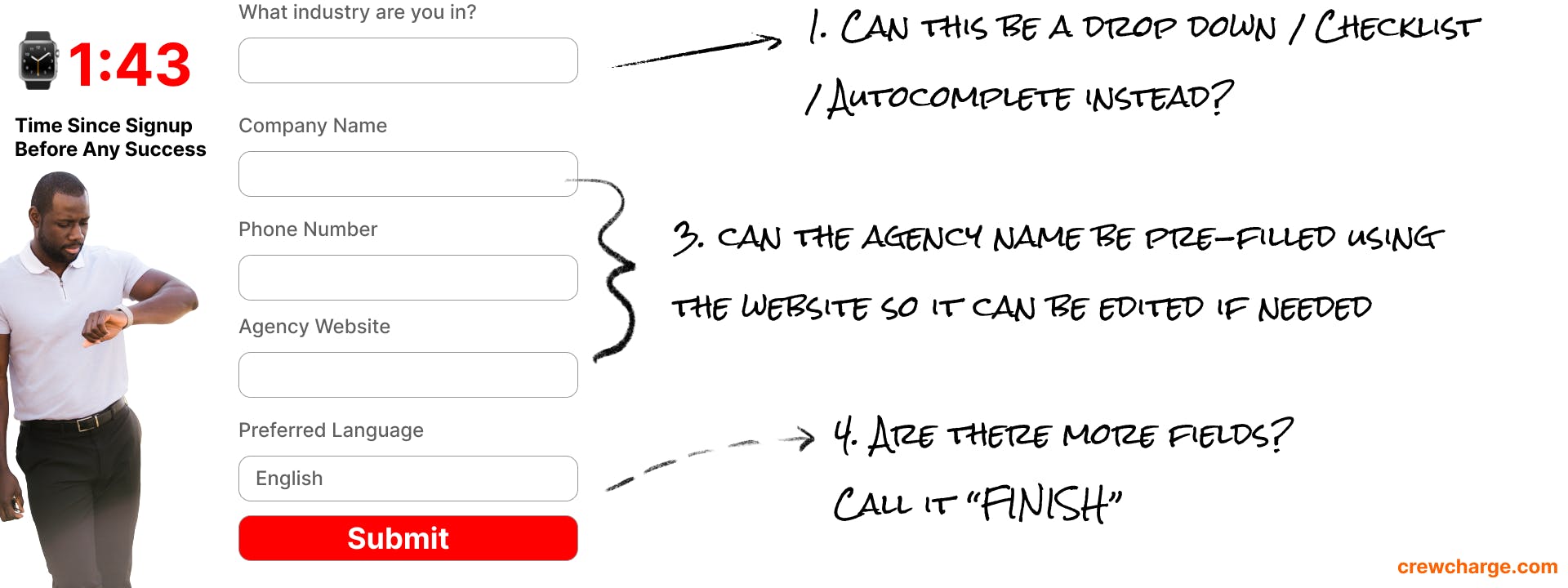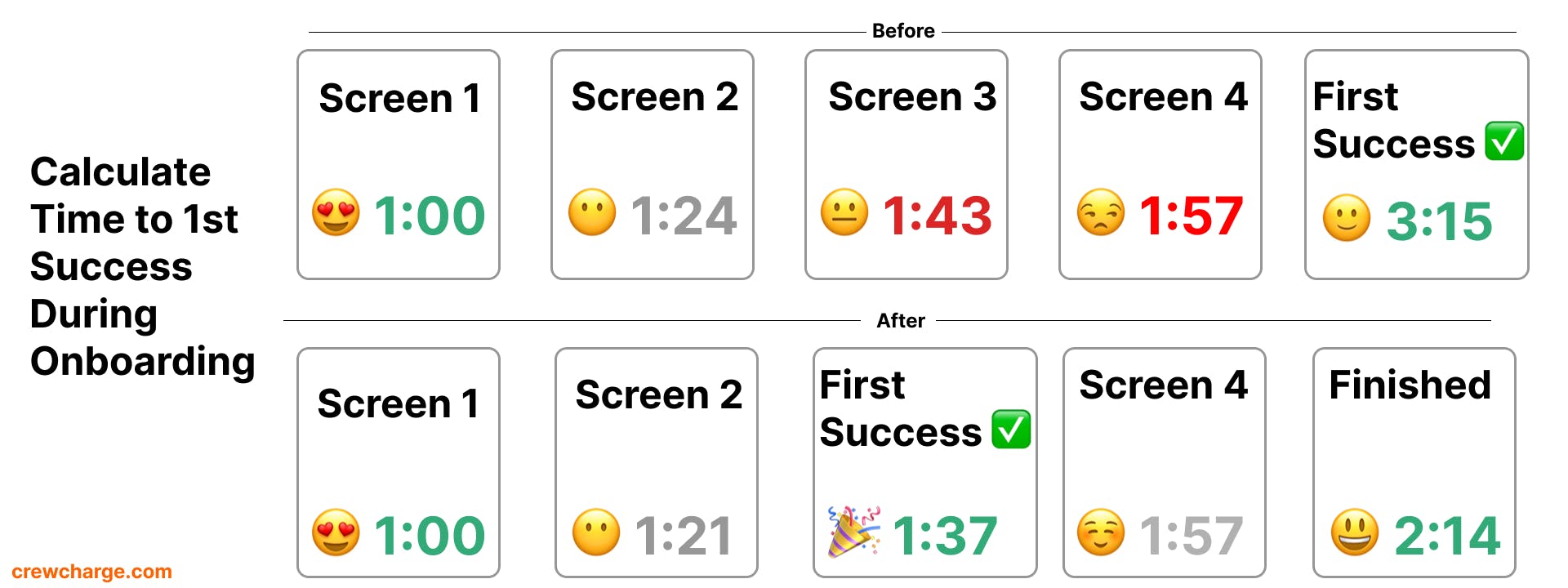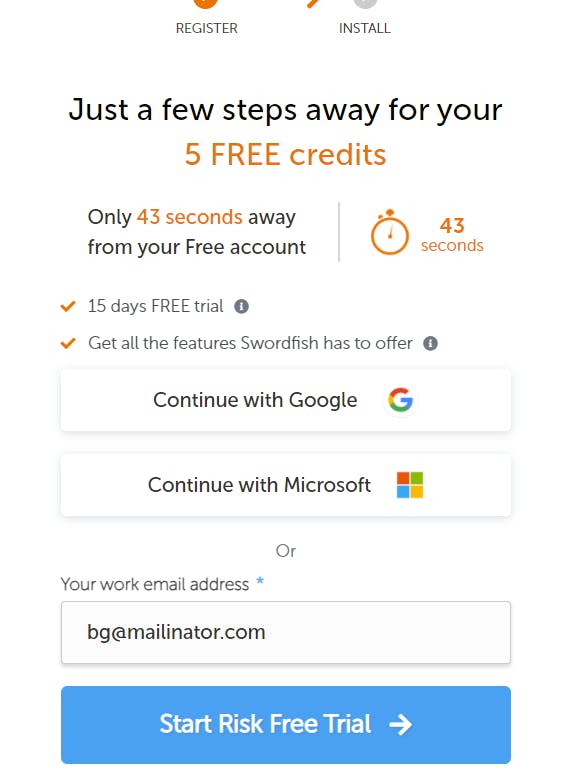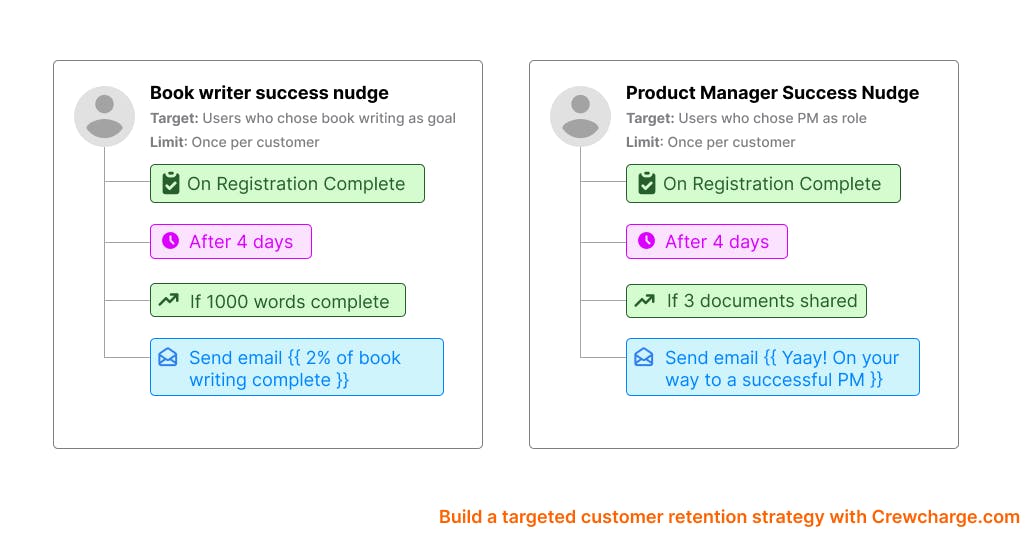5 Red Flags 🚩 in SaaS Onboarding that causes Customer Churn
Every proven method of reducing customer churn relies on achieving Customer Sucess. In this blog, we'll explore a checklist for SaaS onboarding.
Table of contents
A SaaS company has approximately 14 days to prove its worth to the user, or there's a huge chance of Customer churn. Every proven method of reducing customer churn relies on achieving Customer Sucess. In this blog, we'll explore a checklist for SaaS onboarding mistakes to avoid, that sets your customers to success, and in turn, reduces your customer churn.
Before we dive into the article, I just wanted to share the happy news of this newsletter reaching 1000+ subscribers so quickly! As a small token of appreciation 🎁, I'm giving out a personalized customer retention strategy to the first 3 SaaS owners who reach out to me.
1. Using long & outdated forms. ⌛
Forms are a great way to capture information about your customer's needs. Yet, the first thing users do when they're asked to fill something out is estimate how long this process would take. I recently onboarded to a SaaS that made me fill exactly 24 fields manually with several repetitive useless information that wasn't related to the company in the first place!

Takeaways
✋ No more than 3-5 fields per page. Collect only the information you need to set them up for success and improve their efficiency.
🪓 Split fields into separate pages if needed.
⌚ Calculate the time to complete every field addition.
✅ Use autocomplete text views, radio buttons with images, options checked by default when applicable v/s traditional text input fields
2. Lacking progress indicators 🚧.
Science is in: Humans hate waiting. Your landing page and the salesman just told your customer they can use your product to find 50 new customers this week. After all the hype, you cannot make them fill 13 pages filled with 24 fields to show them the dashboard.
Yet a lot of information needs to be captured about the customer before they use the product. The easy way after you're done with trimming the extra questions that don't add to your insights or value to the customer - the best way is to use progress indicators.

Just the visual cues aren't going to be enough for your customers to use your product, remember the excitement comes through what's possible through your tool and rarely for using your tool itself.
Another example I recently came across that's extremely impressive was from Swordfish.ai where there is even an emphasis in 43 seconds to your first dopamine spike.

Takeaways:
⌛ Make sure you add visual progress cues like progress bars, steps, or even time indicators.
🥳 Calculate your time to the first metric towards customer success, and reduce it.
⌚ Go through your onboarding flow as a slow user and calculate the time of each screen.
3. Not capturing the goals of your customer. 🎯
Remember the SaaS application from the first example? Irrespective of the huge number of fields and pages I had to go through, never was I asked what did I want to achieve using the tool.
Companies make their onboarding forms too big because they want data, but it's important to find a balance on how much it delays the customer's time to first success.

As discussed in a previous article, a great SAAS product has a wide use-case since users love an all-in-one solution. Hence it's really important to capture the goal of each customer, more than it is to ask them how likely they are to refer you to a friend - this will not happen during onboarding!
Takeaway:
🎯 Capture the goal of each customer, they're bound to be different for the majority.
4. Overwhelming customers with tasks. 🥱
Your SaaS might provide a long-term goal or a short-term one. Irrespectively, a good product manager ensures that the customer success measure is broken down, into small parts and visualized repetitively.
Once you've captured their goal in step 3, it's easier to segment your customers to set them up for success using simple tasks.
For example, imagine you were Microsoft word, and your customer's goal was to write a novel using Microsoft word. It's impossible for them to write a complete novel within 14 days.
Hence your milestone to your customer's success is first visualized by writing their first 100 words, then 1000, and then the book.
Takeaways:
🚀 It will take time for your customers to reach their goals - so don't rush them into trying every feature of your SaaS right away.
5. Not using marketing outreach to visualize their journey 💹
Your customers might not hang around inside your application always, since they aren't really habituated to it yet.
Attention is always a zero-sum game and hence the goal of onboarding in the first 2 weeks to make your product sticky is a huge challenge. Make sure you do this using e-mail marketing, SMS, and WhatsApp marketing.
For example, if your SaaS product was Microsoft word,
Segment your customers by their goals. For simplicity, let's consider the segment to be product managers and novel writers.
Visualize their journey inside your SaaS using a customer insight tool like Crewcharge.
Then, dispatch emails, in-app widgets to congratulate them on their journey.

Takeaways
⛵ Understand that every customer is different and build out separate workflows for them to ensure their success.
✨ Make sure you help them celebrate their milestones.
6. Bonus: Lack of effort put into human intervention.
While all SaaS product owners love to believe their products are built to be easy to understand, a lot of customers need the initial nudge of human intervention.
This can be something as simple as:
Identifying non-performing customers and reaching out to help them out with using the tool
Understanding the pain points of the customer's problem, and whether or not your problem solves the issue.
While this strategy works excellently well for B2B SaaS companies and early-stage B2C companies, handpicking a small number would be a better strategy for late-stage B2C companies.
About Crewcharge and the author
Crewcharge is an all-in-one customer retention platform to help SaaS companies boost revenue. Our tool focuses on
Customer analytics to find which customer is performing actions and finding your super customers.
Segmented marketing automation to deploy marketing campaigns, push notifications, and even trial extensions to gifts to specific super customers who match your ideal customer profile.
Feedback and in-app widgets to calculate NPS, CES, CSAT, and more custom widgets to build a customer-driven SaaS company.
Book a demo for your SaaS with Crewcharge, here.
Bharadwaj Giridhar - the author of this article quit his job on a quest to help SaaS companies cut their churn in half. You can read more about his personal journey here.
This post was originally published here

